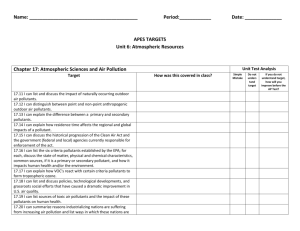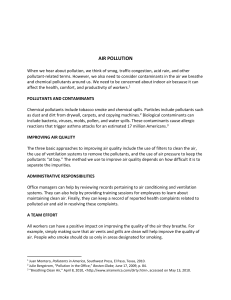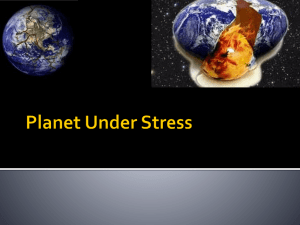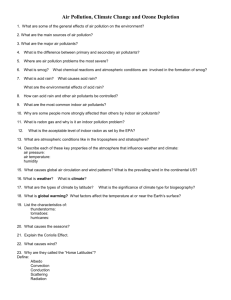Science SCI.V.3.4
advertisement
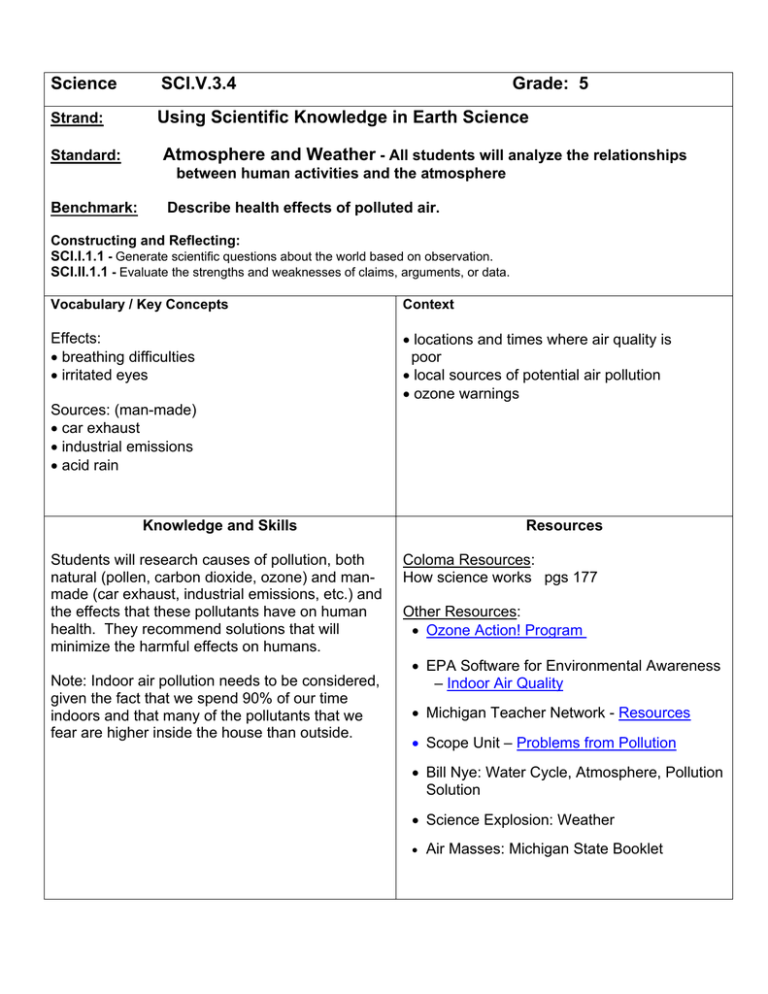
Science SCI.V.3.4 Strand: Using Scientific Knowledge in Earth Science Standard: Grade: 5 Atmosphere and Weather - All students will analyze the relationships between human activities and the atmosphere Benchmark: Describe health effects of polluted air. Constructing and Reflecting: SCI.I.1.1 - Generate scientific questions about the world based on observation. SCI.II.1.1 - Evaluate the strengths and weaknesses of claims, arguments, or data. Vocabulary / Key Concepts Context Effects: • breathing difficulties • irritated eyes • locations and times where air quality is poor • local sources of potential air pollution • ozone warnings Sources: (man-made) • car exhaust • industrial emissions • acid rain Knowledge and Skills Students will research causes of pollution, both natural (pollen, carbon dioxide, ozone) and manmade (car exhaust, industrial emissions, etc.) and the effects that these pollutants have on human health. They recommend solutions that will minimize the harmful effects on humans. Note: Indoor air pollution needs to be considered, given the fact that we spend 90% of our time indoors and that many of the pollutants that we fear are higher inside the house than outside. Resources Coloma Resources: How science works pgs 177 Other Resources: • Ozone Action! Program • EPA Software for Environmental Awareness – Indoor Air Quality • Michigan Teacher Network - Resources • Scope Unit – Problems from Pollution • Bill Nye: Water Cycle, Atmosphere, Pollution Solution • Science Explosion: Weather • Air Masses: Michigan State Booklet Instruction Focus Question: What human health risks are associated with air pollution? Set up student groups to research the following topics: breathing difficulties, car exhausts, industrial emissions, acid rain, and ozone conditions. Using a variety of resources, including technology and media, students collect and share data relating to health issues caused by air-borne pollutants. Students create a visual presentation displaying what pollutants are normally found or those found in your area, where the pollutants originate, and health effects associated with them. Students generate a plan to eliminate or decrease these pollutants and share with parents and other members of the community to increase a general awareness of the human health risks. Assessment Optional Assessment: Students create a news report that alerts the community to the air-born pollutants in the surrounding area, and the health effects related to these pollutants. Students must include in their news reports: • • • An understanding of the issues based on research. Visual connections that relate pollutants to health issues are required in the form of graphs or data tables. Alternatives/solutions to the stated problems. Students may present their news report to parent or community members. (Give students rubric before activity.) Scoring Rubric Criteria: Apprentice Basic Meets Exceeds Understanding of health effects: Provides a personal interpretation of at least one health issue as it relates to pollutants. Provides a research-based interpretation of at least one health issue as it relates to pollutants. Provides a research-based interpretation of at least two health issues as they relate to pollutants. Provides a thorough and accurate research-based interpretation of several health issues as they relate to pollutants. Connections between a pollutant and a health issue: Presents a visual connection between a pollutant and a health issue. Presents a visual connection between more than one pollutant and the resulting health issues. Presents clear visual connections between some pollutants and health issues. Presents clear, logical connections between many pollutants and health issues including data tables or graphs. Solution to problems: Explains one possible solution that is not feasible. Explains one solution that is feasible. Explains thoughtful alternatives and/or some solutions to the problem. Explores and generates questions and proposes alternatives or many solutions to the problem. Note: Can be used in coordination with Earth Day Teacher Notes: The atmosphere is a mixture of nitrogen, oxygen, and trace gases that include water vapor. The atmosphere has different properties at different elevations. (NSES) Focus Questions • What gases compose the atmosphere and why are they important? • What are their characteristics? • What are several sources of air pollution and how does it affect human health?
